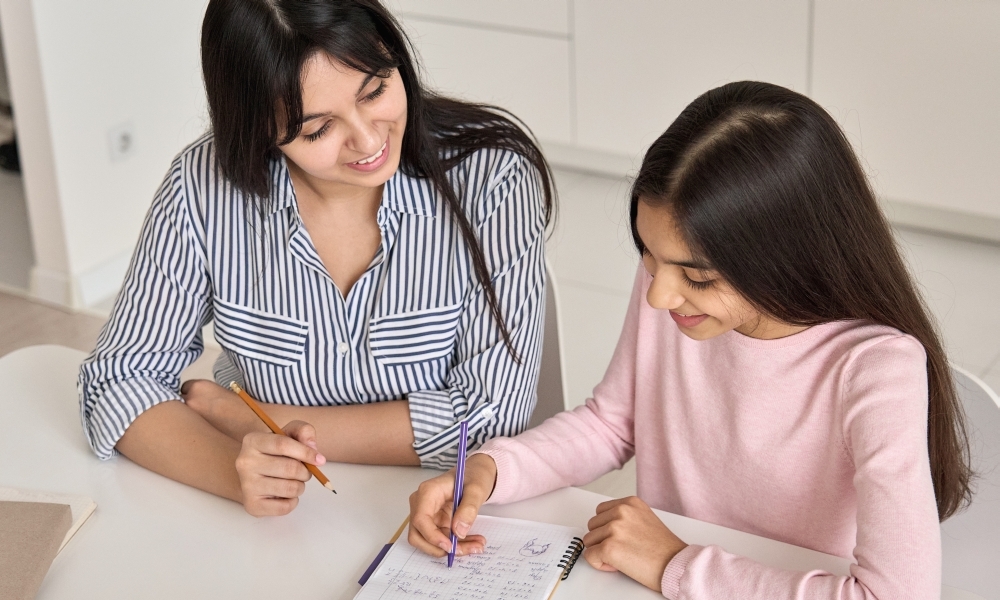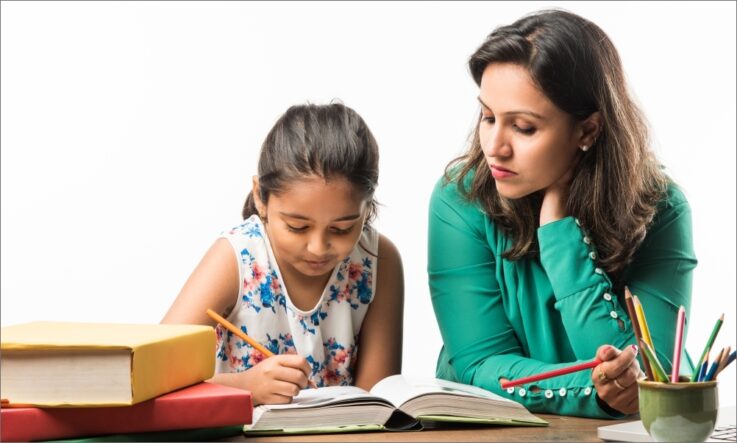Dr Rebecca Winthrop is a Senior Fellow and Director of the Centre for Universal Education (CUE) at the Brookings Institution. Here, she shares the findings from a research initiative she has led at CUE on school engagement with families across 10 countries, including India, along with some practical tips for building school-family engagement.
As schools around the world were struggling to help learning continue amid pandemic closures in 2020, there was one silver lining that I kept hearing from teachers, principals, and jurisdiction leaders: they were getting to know their families better.
In fact, many education leaders had what I would call an ‘ah-ha’ moment. From a school district superintendent running a large urban school district in the United States to a state ministry team running a diverse rural school system in India, leaders were surprised at how many families that were previously unengaged started participating when the mechanisms to do so shifted.
Families that had never come to welcome nights or parent-teacher meetings were actively participating in online meetings with teachers or learning activities via SMS messages. ‘We thought these families did not participate before because they didn’t care about their children’s education,’ was a common refrain I heard. Instead, they just needed a new way to be engaged.
A playbook for engagement
Since 2019, I have been leading a research initiative at CUE at the Brookings Institution on family-school engagement and its role in improving and transforming education systems. Central to this initiative is our CUE Family Engagement in Education Network, made up of 50 organisations – jurisdiction leaders, their teams and their civil society partners, parent organisations, and three private school networks– across 10 countries including Argentina, Australia, Botswana, Canada, Colombia, Ghana, India, South Africa, the United Kingdom, and the United States.
Together with our network collaborators, in 2020 and 2021 we surveyed 6000 teachers and 25 000 parents, and spoke to hundreds more through focus groups. We also analysed over 500 family-school engagement strategies across 60 countries and reviewed the existing global research on family engagement. The result is our recently published playbook: Collaborating to Transform and Improve Education Systems: A Playbook for Family-School Engagement. When I started this project in 2019, I did not know how timely this work would be.
We found that across the world, parents and caregivers uniformly want to be engaged in their children’s education – regardless of education level or socio-economic status – but did not always know how. This was especially the case for parents and caregivers of secondary school-age students who frequently felt shut out by their schools and teachers. Often, family members of older students would comment, ‘we know that our children need to be more independent and so we need to support them differently, but I still have a role to play in their education yet I am not invited in.’
The pandemic has also raised the expectations of parents regarding their engagement with their children’s education. Recent surveys across Colombia, Mexico, Peru and the US all show an increased demand from parents for ongoing and deeper engagement with their children’s teachers and schools (Learning Heroes, 2020; Molina et al., 2020).
Likewise, we found in our survey of teachers that the vast majority were planning on engaging more frequently or deeply with students’ families, or with a larger number of family members, including those who they have less communication with.
Improving relationships in your school community
Our playbook highlights several essential approaches for schools and teachers to develop strong, trusting relationships with parents and families. Three of these approaches are outlined here:
1. Focus on engagement, not involvement
Not all types of interaction between families and schools leads to positive outcomes. As we note in our playbook evidence, if not done well, school-family activities can backfire and make things worse rather than better for students. An important distinction here is the difference between ‘family involvement’ versus ‘family engagement’ (Ferlazzo, 2011).
A family involvement approach to working with families is when a school has a client-serving mindset and ‘leads with its mouth’, sharing information and providing a set of specific ways families can participate in school activities and work. A family engagement approach, however, is where schools ‘lead with their ears’, asking families about their lives and hopes for their children.
A partnership mindset informs an engagement approach with families and schools jointly identifying how to work together. A family engagement approach is especially helpful in building strong and trusting relationships between families and schools. In the words of one US school district leader we interviewed, ‘No institution or one actor can reinvent the education system by themselves. So you need to spend the time to develop an answer to the question: What is it that we want for our children in this community? Only once we agree on where we’re trying to go, can we then work in coordination and know what our respective roles are. Developing this shared vision is what good leaders do.’
2. Make space for intentional conversations about the purpose of school
In our research, we found very different perspectives across countries and communities on what a good-quality education looks like. For example, on the foundational question of what is the most important purpose of school for their children and students, families and teachers in the same geography often had very different answers.
We found most schools do not have mechanisms for dialogue between school leaders, teachers, parents, and students on what a good-quality education looks like. Starting with discussing what the most important purpose of school is can help develop a shared vision between families and schools that also helps build relationships and trust.
This shared vision has also been shown to be crucial for helping roll out and sustain school and jurisdiction reforms (Barton, Ershadi & Winthrop, 2021). Our playbook’s Conversation Starter Tools provides a practical guide for having these intentional conversations.
3. Bring school to parents, not parents to school
Families are often busy and struggle to attend activities organised at their children’s school. Shifting the mechanisms for how schools and teachers engage with families (and what they engage with them on) can be a powerful catalyst for forging strong family-school partnerships. For example, the Ministry of Education of Himachal Pradesh state in India found a major improvement in parent participation in parent-teacher meetings, from 20 percent to approximately 80 percent, when they moved to online meetings (Winthrop, 2022).
Like in Himachal Pradesh, the pandemic led to jurisdictions, schools, and teachers using a wide range of creative strategies for bringing the school to families. In Botswana, schools sent SMS messages with maths problems to parents accompanied by weekly phone calls where parents and students would talk through the question together with the teacher. This strategy resulted in improving numeracy for students.
Some strategies that pre-existed COVID became especially relevant during the pandemic, such as the organisation FASTalk, which gives teachers the tools to regularly communicate with families about homework, class content and expectations in over 100 languages through text messages.
CUE’s Strategy Finder houses over 60 family engagement strategies in education across a range of contexts from early learning through primary and secondary.
Seizing the moment to forge more collaborative relationships between schools and families is a very good thing. Teachers are on the frontlines of family-school relationships, and when there are strong trusting relationships with families and teachers, students perform better academically.
References:
Barton, A., Ershadi, M., and Winthrop, R. (2021). Understanding the connection between family-school engagement and education system transformation: a review of concepts and evidence. Brookings Institution. https://www.brookings.edu/wp-content/uploads/2021/10/Understanding_The_Connection_FINAL.pdf
Ferlazzo, L. (2011). Involvement or engagement? Educational Leadership, 68(8), 10–14.
Learning Heroes. (2020). Parents 2020, COVID-19 closures: A redefining moment for students, parents & schools. https://bealearninghero.org/wp-content/uploads/2020/11/LH_2020-Parent-Survey.pdf
Molina, A. V., Belden, M., Arribas, M. J., & Garza, F. (2020). K-12 education during COVID-19: Challenging times for Mexico, Colombia, and Peru. EY-Parthenon. https://www.ey.com/en_us/strategy/how-covid-19-has-impacted-k-12-education-in-mexico-colombia-and-peru
Winthrop, R. (2022). Top 5 insights for improving family-school collaboration during COVID and beyond. The Brookings Institution. https://www.brookings.edu/blog/education-plus-development/2022/01/26/top-5-insights-for-improving-family-school-collaboration-during-covid-and-beyond/
Dr Rebecca Winthrop says, ‘A family engagement approach, however, is where schools “lead with their ears”, asking families about their lives and hopes for their children.’
As a principal or school leader, consider when and how these intentional conversations can take place with families. How can you facilitate opportunities for teachers and families to strengthen communication?



